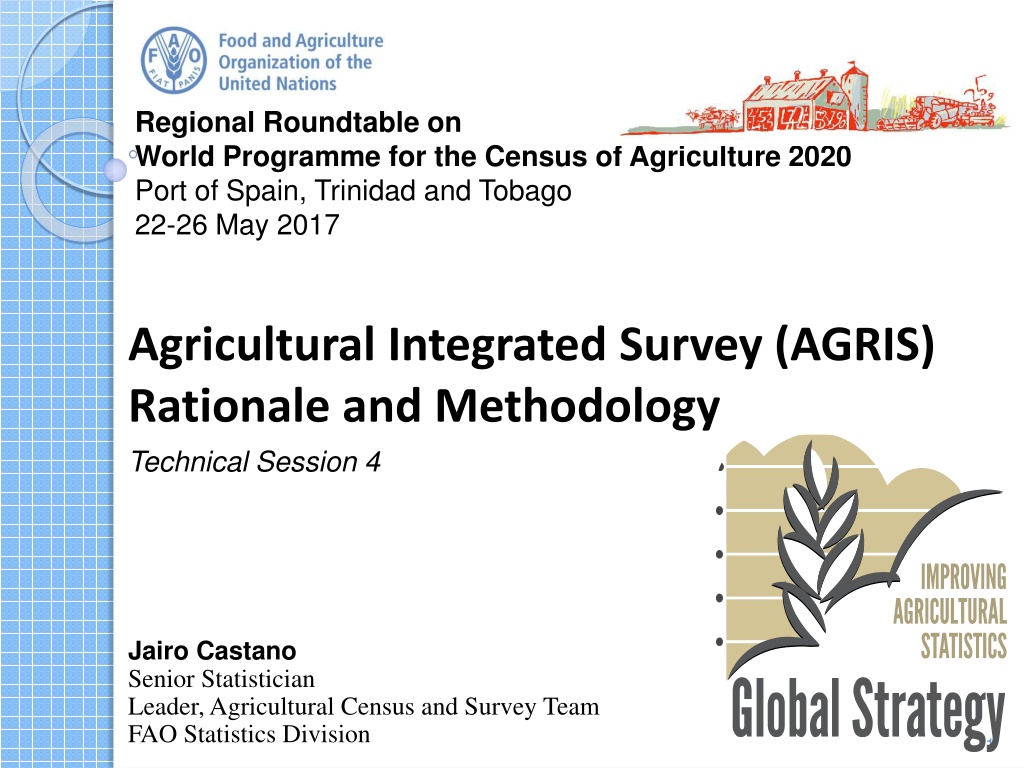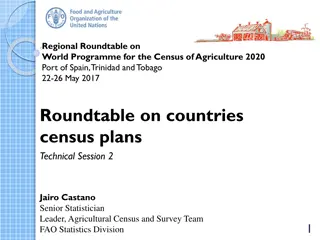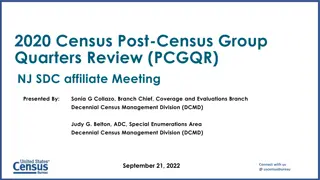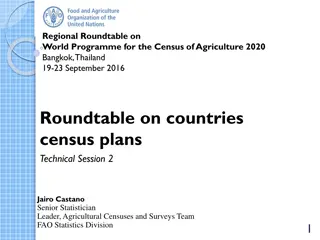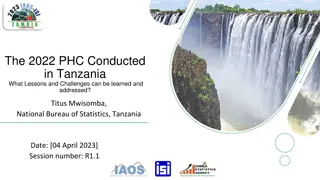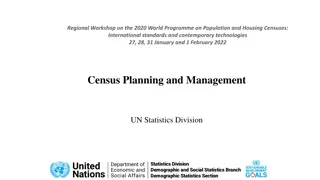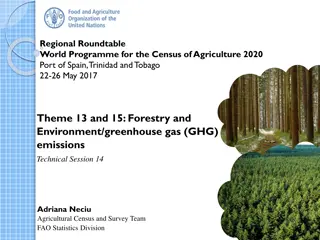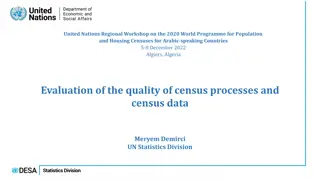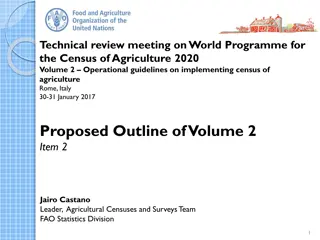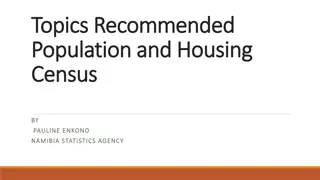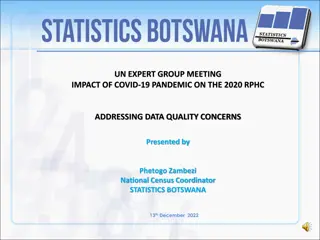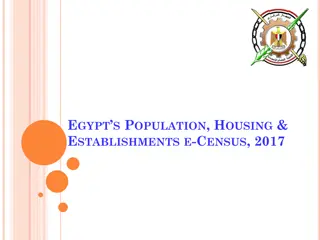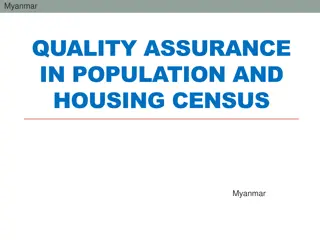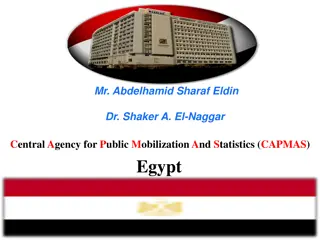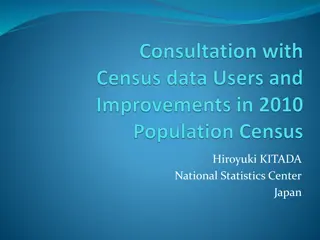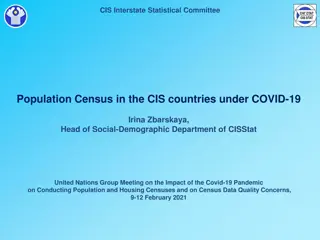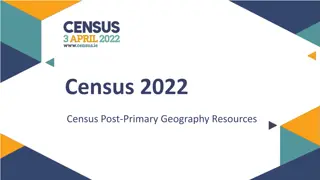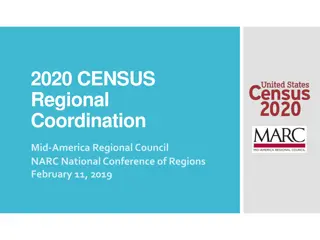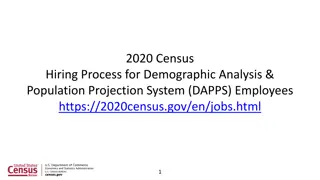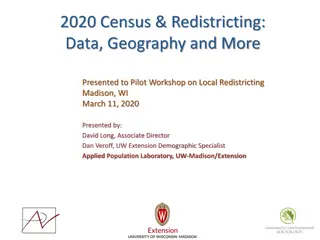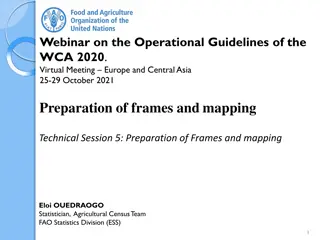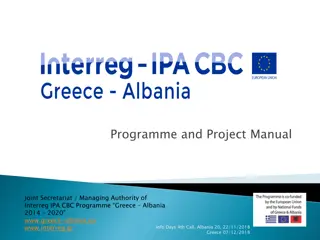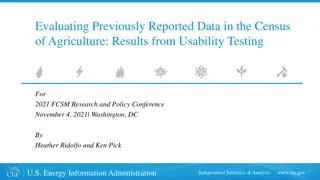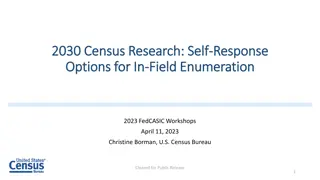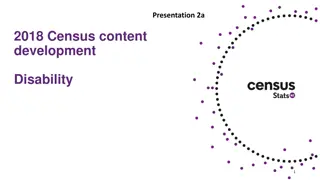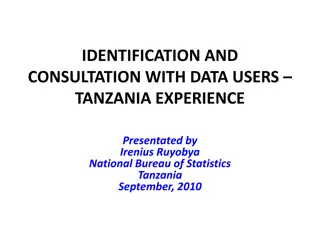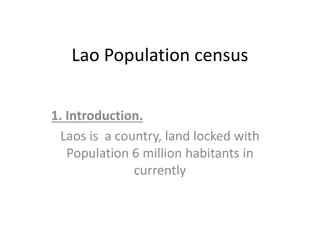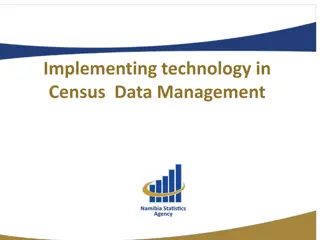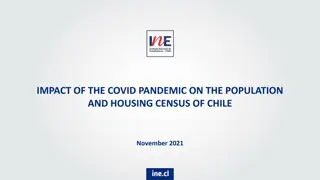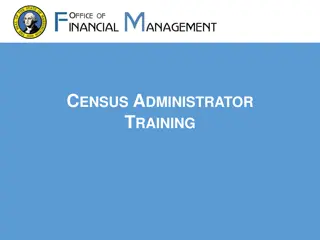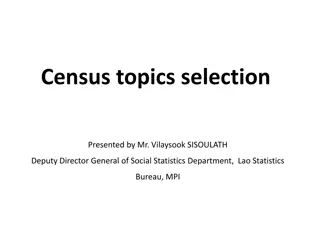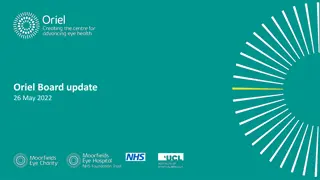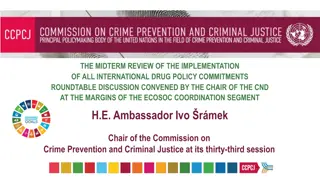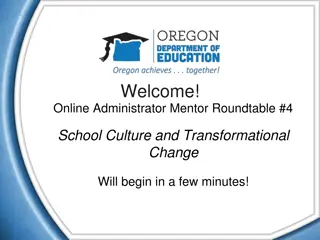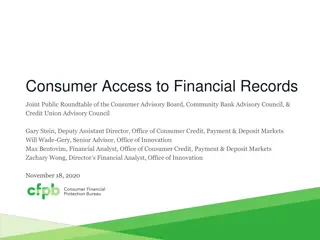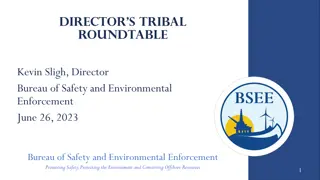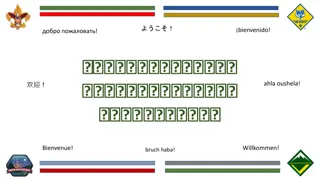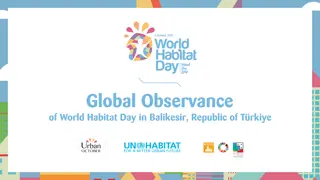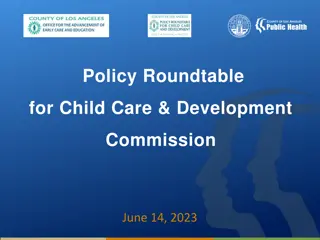Regional Roundtable on World Programme for the Census of Agriculture 2020
There is a pressing need for improved agricultural data, particularly in the context of SDG indicators and global statistics. The Agricultural Integrated Survey (AGRIS) offers a comprehensive solution with a 10-year farm-level integrated survey approach, providing essential data for policy-making, market efficiency, and SDG monitoring. The methodology focuses on all agricultural holdings, including smallholders, and operates on a 10-year cycle to ensure a steady flow of quality data.
Download Presentation

Please find below an Image/Link to download the presentation.
The content on the website is provided AS IS for your information and personal use only. It may not be sold, licensed, or shared on other websites without obtaining consent from the author. Download presentation by click this link. If you encounter any issues during the download, it is possible that the publisher has removed the file from their server.
E N D
Presentation Transcript
Regional Roundtable on World Programme for the Census of Agriculture 2020 Port of Spain, Trinidad and Tobago 22-26 May 2017 Agricultural Integrated Survey (AGRIS) Rationale and Methodology Technical Session 4 Jairo Castano Senior Statistician Leader, Agricultural Census and Survey Team FAO Statistics Division 1
Outline 1. Context 2. Proposed solution 3. Methodology 4. Topics covered 5. AGRIS toolkit 2
1. Context There is a need for more, better, cheaper and faster statistical data on the agricultural and rural sector, farm level SDG indicators add new pressure and widen data gaps Data collection still weak in many countries, even for basic data items Among the International Developmet Assistance (IDA) countries, within the last 15 years: Over half have not conducted any agricultural census About three fourths have no annual agricultural survey Global Strategy to improve Agricultural and Rural Statistics 3
2. Proposed solution AGRIS: A 10 year farm-level integrated survey: Comes with a generic methodology proposed not imposed to countries for further customization + implementation Generates representative estimates national/province/district Informs policy design and implementation, improve market efficiency and support research Contributes to SDGs monitoring (5 indicators directly, 16 indicators partially) Generate about 65% of Global Strategy Minimum Set of Core Data Lays the foundations of an efficient agricultural statistical system Is affordable and manageable to allow sustainable country implementation 4
2. Proposed solution Generic AGRIS package proposed to countries AGRIS toolkit available for further national implementation and customization Methodological resources, guidelines and software/code: Planning and design Data collection Data processing, analysis, archiving Data dissemination 5
3. Methodology Statistical Units All agricultural holdings Household sector (INCL. SMALL HOLDERS) Non-household sector Modular Structure Synchronized with the Agricultural Census and operates over a 10- year cycle to provide a regular flow of quality data Core Module: yearly data collection on current agricultural production (crop and livestock) integrated with key economic, technical and socio-demographic statistics Rotating Modules : thematic data to be collected with lower frequency (2-5 years): economy, labour, machinery-equipment-assets- decisions, production methods & environment. Sample design Versatile sampling strategy, able to meet different country situations Multiple waves for data collection possible (e.g. for labour, economy) Panel/Rotating sample for the core module Sub-sample of the core module for the rotating modules when possible Data collection Face-to-face interviews Questions = Subjective => link with objective measurements 6
3. Methodology Recommended flow of modules Years 0 1 2 3 4 5 6 7 8 9 10 Agricultural Census Agricultural Holding Roster AGRIS Core Module Crop production Livestock production AGRIS Rot. Module 1 Economy AGRIS Rot. Module 2 Labour force AGRIS Rot. Module 3 Machinery and equipment AGRIS Rot. Module 4Production methods and environment 7
4. Topics covered AGRIS covers technical, economic, environmental and social dimensions of agricultural holdings AGRIS collects sex-disaggregated data on key topics: to identify male / female headed holdings to assess women's contribution to agriculture: o labour o access to and control of productive assets, resources and services o decision making 8
4. Topics covered: core module CORE MODULE 1. Identification and general characteristics of the holding Location, holder, manager, respondent, main activity, main destination. 2. Agricultural productions Crops: last 12 months Crops: next12 months Livestock Meat, milk, eggs and other animal products Aquaculture and fisheries 3. Economy Income. Expenditure Credits and access to finance Access to information 4. Production shocks and cooping mechanisms 5. Demographics (Household agricultural holdings only) 6. Labour Labour input on the holding 7. Holding housing dwelling and assets (Household agricultural holdings only) 9
4. Topics covered: rotating modules ROTATING MODULE 1 : Economy 1. Main characteristics of the holding Identification, land ownership and use, livestock ownership 2. Income from agricultural production Quantity produced, by commodity (from Core) Quantity sold, by commodity Total values of sales or average price received, by commodity 3. Other sources of income of the holding Aquaculture and fisheries (sales) Forestry products (own use and sales) On-farm processing of agricultural commodities (total quantities produced, sold and expenses) Energy/Electricity generation (amount produced, sold and value) Diversification activities (income and expenses) Other sources of income related to agriculture (income) 4. Subsidies and transfers related to agricultural production Direct and indirect subsidies; transfers 10
4. Topics covered: rotating modules ROTATING MODULE 1 : Economy (continued) 5. Other sources of income of household members Salaries, rentals (other than renting of agricultural land of the holding), investments, etc. 6. Inputs and production costs For crop production For livestock production Labour (total salaries/wages in cash or in kind) 7. Taxes and licenses related to the holding Taxes paid (value) - land, property etc. Licenses (value) water, access rights, etc. 8. Investments and financing Purchase of capital/fixed assets (value) Loans (provider, type, value and use on the holding) 9. Insurance schemes Type, coverage, premium values and repayments 10. Storage facilities By type and commodity 11. Marketing % produced sold, market type and characteristics 11
4. Topics covered: rotating modules ROTATING MODULE 2 : LABOUR 1. Overview of labour force on the holding 2. Peak and low months 3. Demographic characteristics of workers 4. Time worked by workers 5. Forms of contractors and payments 6. Contractors 12
4. Topics covered: rotating modules ROTATING MODULE 3 : MACHINERY, EQUIPMENT, ASSETS AND DECISIONS 1. Machinery and equipment (types and quantities, access and ownership) Manually operated equipment; Animal powered equipment Machines for general farm use Specialized agriculture machinery 2. Types of non-residential buildings 3. Assets (Household Agricultural Holdings only) Land, livestock owner, operator Household dwellings Drinking water Household assets 9. Distribution of managerial decisions in the holding (Household Agricultural Holdings only) 13
4. Topics covered: rotating modules ROTATING MODULE 4 : PRODUCTION METHODS AND ENVIRONMENT (QUANTITIES, TYPES AND AREAS) 1. Use of Natural resources Land use; Energy sources; Soil management; Irrigation and drainage 2.Crops production systems and resources Fertilizers ; Plant protection products; Crops and seeds varieties and resources; Rice cultivation, specificities 3. Livestock production systems and resources Livestock types and resources; Animal breeding and reproduction; Animal housing, manure management, equipment and transportation of animals Veterinary products and use of traditional medical methods Feed and use of pastures 4. Organic farming (certified or in conversion to organic 5. Agro forestry 6. Access to and use of services, infrastructure and natural resources Agricultural extension services (incl. veterinary) Infrastructure (incl. IT, communications, access to market) Access to natural and common property resources 7. Greenhouse gas and environment 8. Adaptation to climate change and mitigation strategies 9. Waste management 14
5. AGRIS toolkit Includes the following Resources (*): draft resource available Planning AGRIS Data needs assessment guidelines Survey plan template Supply and equipment procurement Budget calculation template AGRIS pre-test guidelines Memorandum of Understanding template AGRIS governance: example of terms of reference Quality management checklist 15
5. AGRIS toolkit Questionnaires Indicator lists and data items: core and rotating modules(*) Core and rotating modules: generic questionnaires(*) Flow of modules guidelines Guidelines for the customization of AGRIS questionnaires Sampling AGRIS sampling strategy (*) Sampling programs/syntaxes (in R, STATA, SPSS) Sample size and sampling error calculation simulations Sample weight calculation simulations 16
5. AGRIS toolkit AGRIS data collection CAPI solution for tablets and smartphones: software and training package (*) Instructions for interviewers Instructions for supervisors Fieldwork checklist AGRIS data processing CAPI solution: software and training package (*) PAPI: AGRIS generic questionnaires data entry application Manual for AGRIS data processing Data quality guidelines Tabulation programs/syntaxes (in R, STATA, SPSS) 17
5. AGRIS toolkit AGRIS data analysis Generic tabulation plan Sampling errors calculations Analyses for the core module and the rotating modules: guidelines AGRIS data dissemination Final report and presentation template AGRIS dissemination strategy guidelines and release calendar Generic documentation policy and implementation protocols Guidelines on engaging with journalists Dissemination workshop series: agenda and templates IHSN NADA software and guidelines (*) AGRIS data documentation and archiving IHSN Microdata Management Toolkit: software and guidelines (*) 18
Thank you Thank you. 19
